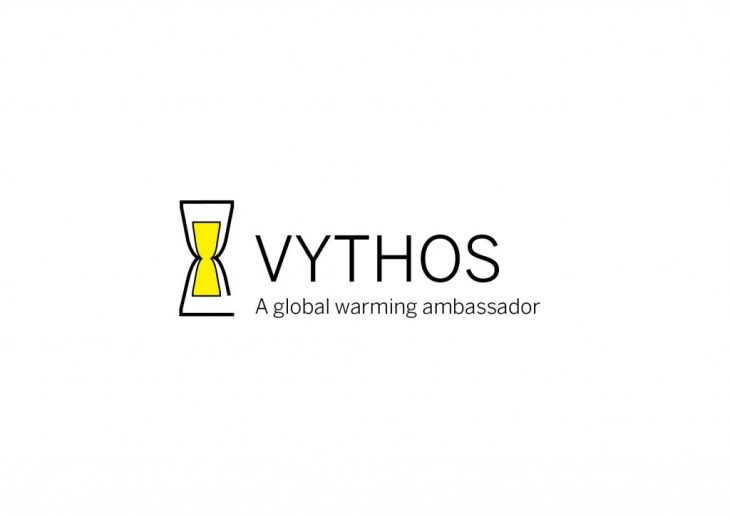
Over 70 percent of the planet’s surface is covered by water, the majority of which is in the world’s seas and oceans. About 99 percent of all freshwater ice resides in two ice sheets: Antarctica and Greenland. Both are expected to melt if humanity’s CO2 output isn’t curbed quickly.
Since 1880, Global sea levels have already risen by 8 inches (200 mm). Sea levels could rise another 1.3 meters (4.3 feet) in the next 80 years. Not only are sea levels rising; the rate of their rise is rising.
Half the world’s population lives within 60 km of the sea, and three-quarters of all large cities are located on the coast. Global flood damage for large coastal cities could cost $1 trillion a year if cities don’t take steps to adapt. Barcelona is one of these cities.
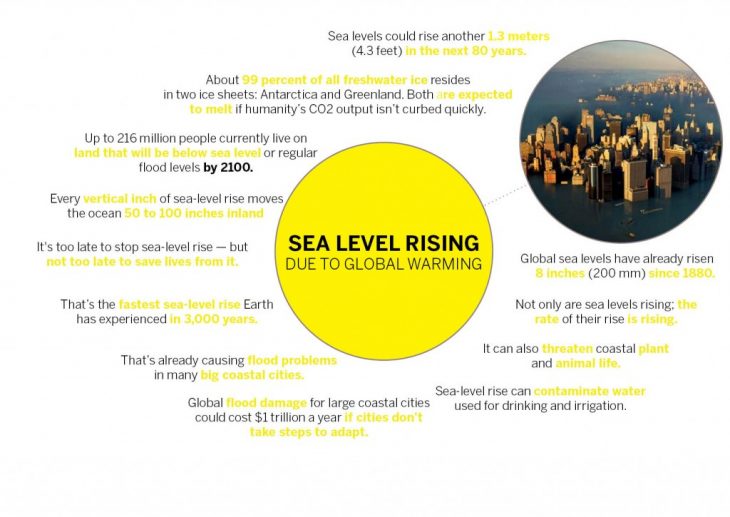
Vythos, is an ambitious project that seeks to raise awareness for this issue by including the citizen’s direct contribution in a real-time experience. Not only it spreads awareness on how climate change affects our environment, it allows to measure the level of knowledge of citizens about this important subject and it also encourages them to provide possible solutions that can help prevent it. Its first physical prototype is to be located in Barcelona, along the Espigon del Gas, one of the central piers of the famous beach of Barceloneta
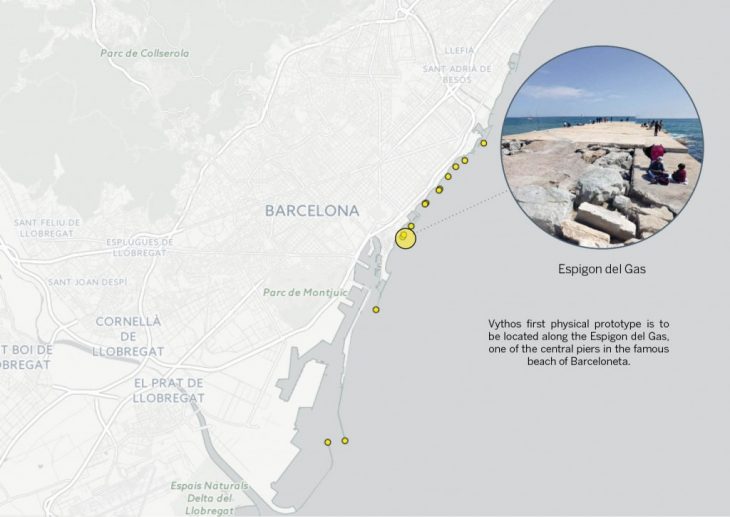
In order to accomplish these goals, we created three strategic components.
The physical, which consists of a modular and adaptable space located at the end of different piers. It combines 4 capsules made of glass, steel and aluminum that simulate flooding in a real time experience and a wooden platform that allows social interaction, activation events and film screening.
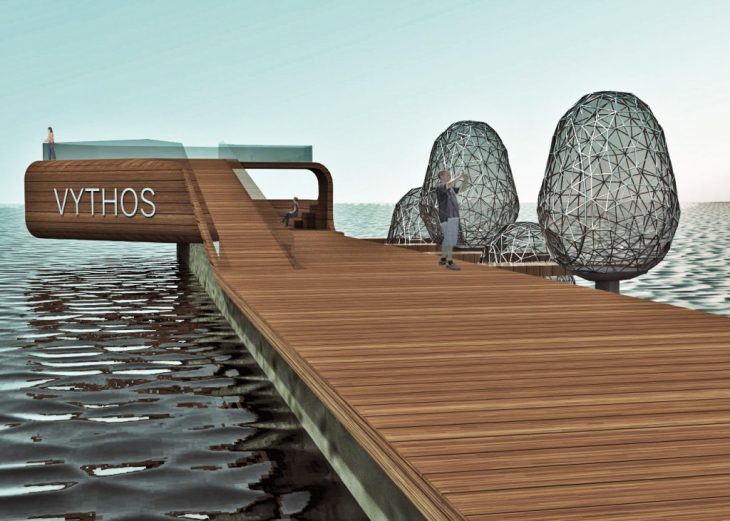
Day render of the Vythos Platform at Espigon Del Gas.
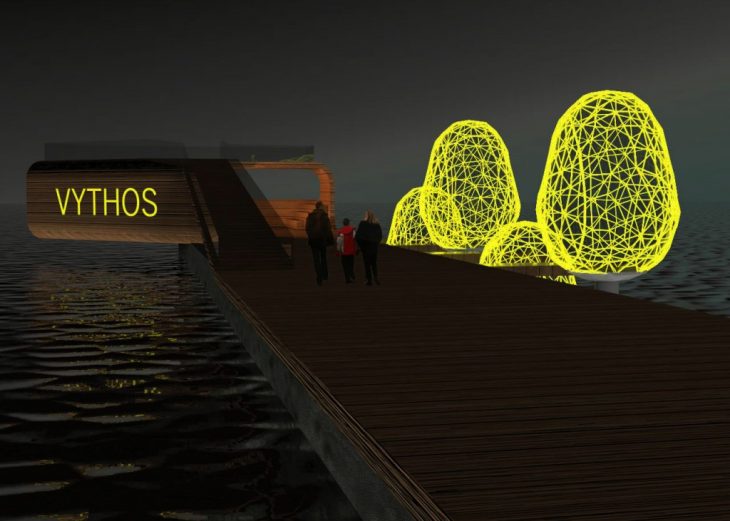
Night render of the Vythos Platform at Espigon Del Gas.
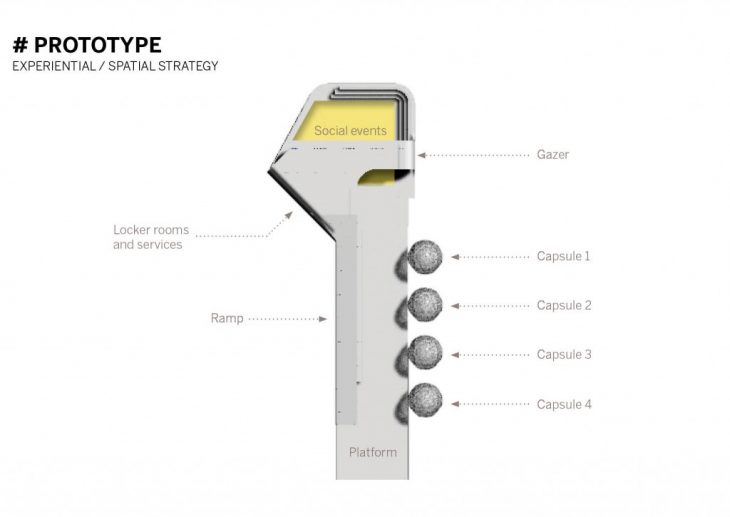
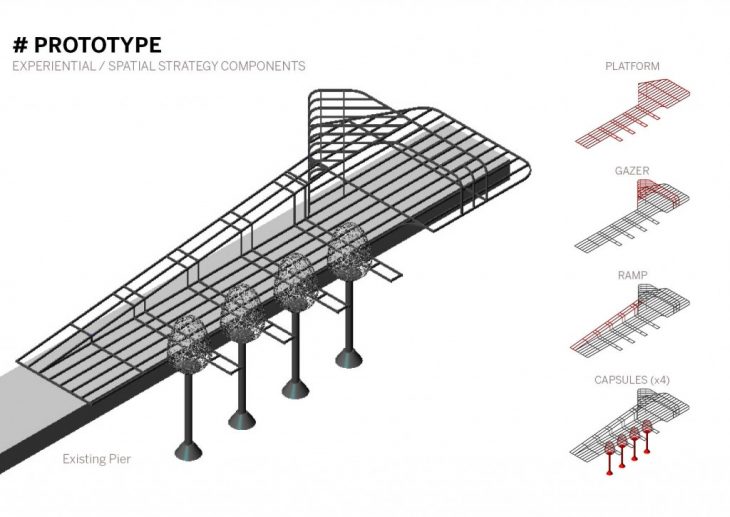
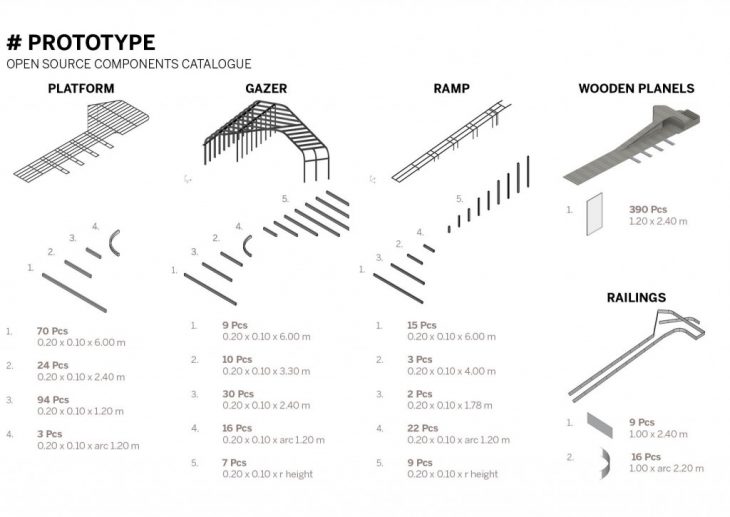
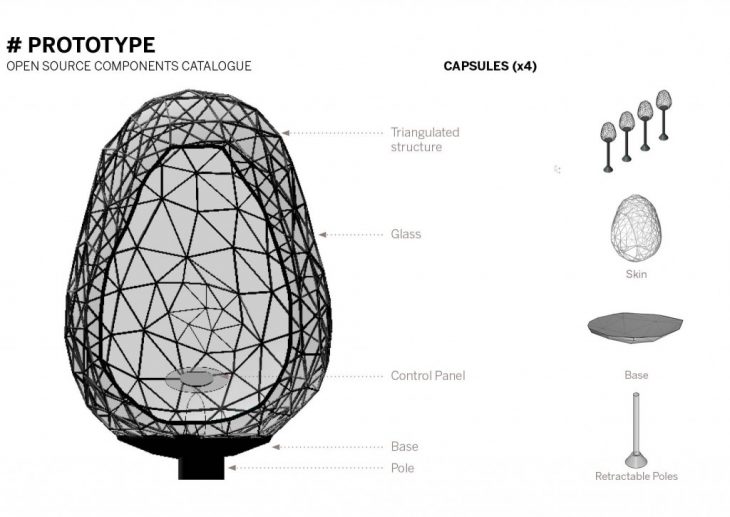
The static components, are sensors attached to the main structure that will collect data related to sea level rising and will help quantify the issue in order to better understand it. The dynamic component of the experience is a game that requires the citizens to save a virtual city from flooding by answering global warming related questions and proposing possible solutions, while at the same being submerged underwater.
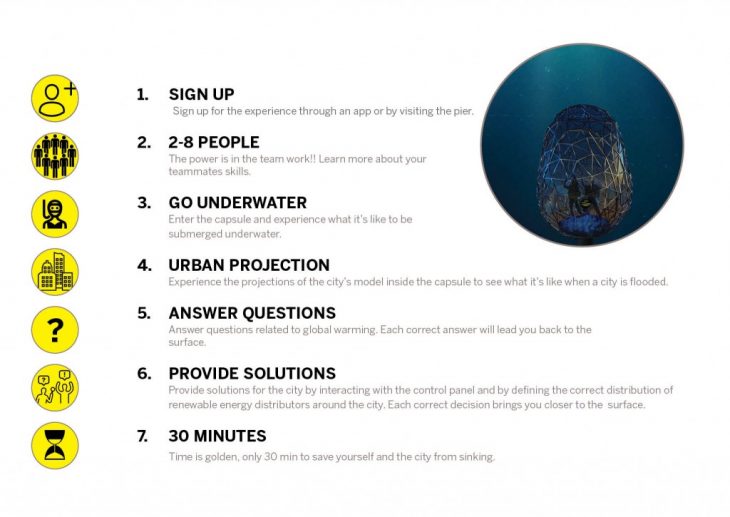
At the same time, people will also be able to join the live experience online through their smartphones, from which they can comment on the player’s progress and analyze the data collected from the sensors.
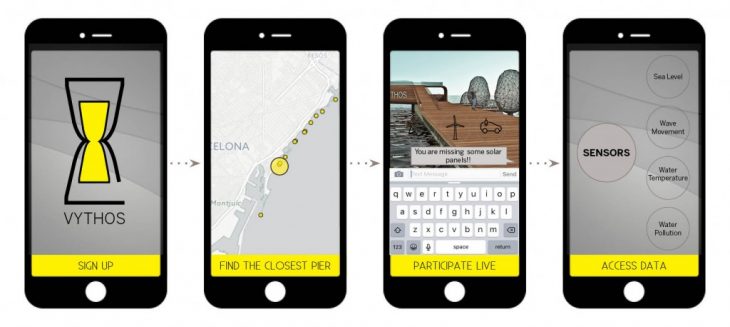
The main ambition of Vythos is to be replicated on every important coastal city that will be affected by the upcoming sea-level rise, not only in Catalonia, but also in Europe and maybe the world.
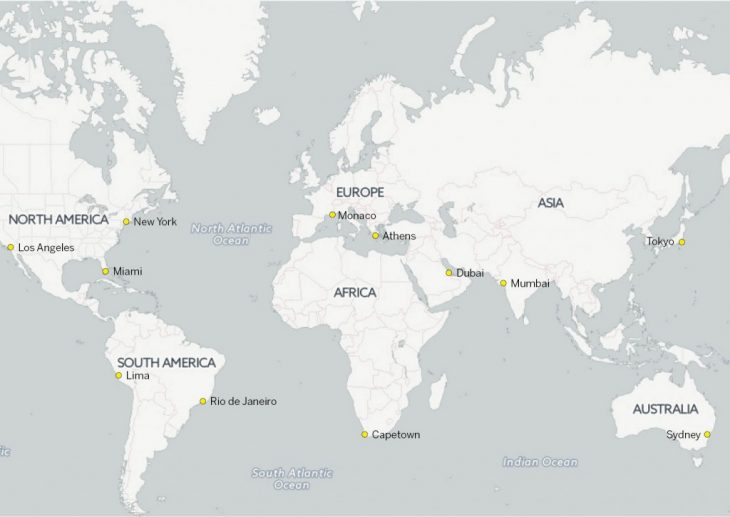
In order to spread this project’s impact from country to country we have created a country-specific waterclock which signifies the submersion of important urban object due to this catastrophic environmental change.
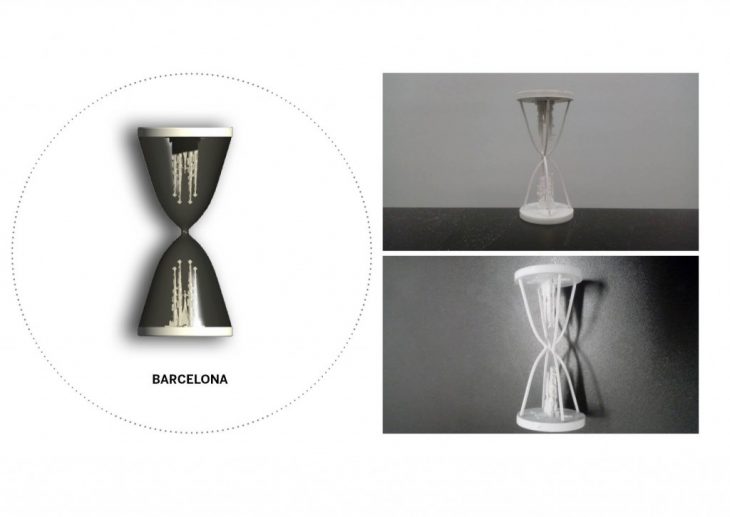
A 3D printed model of the Barcelona waterclock which includes a 3D printed Sagrada Familia.
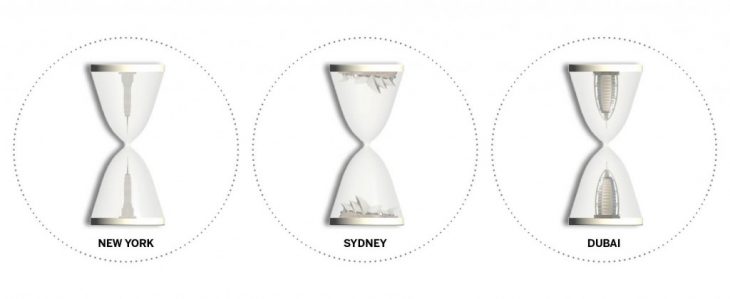
Concept for Waterclocks for different countries with various monuments inside.
Vythos supports different people and agents that contribute to its realisation. Its impact is distributed into the participants of the supporting cities and the investors. We believe that these types of contributors will enable us to realize the project with a positive impact on our community.
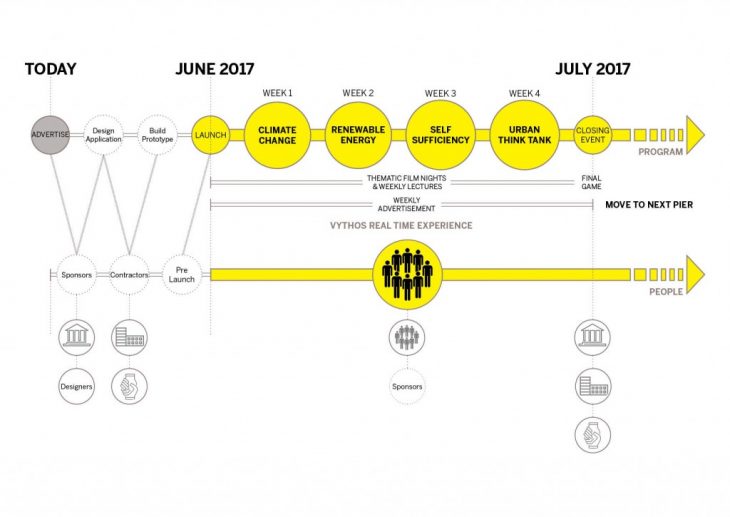
The expected timeline for the application of the Vythos project in one city, from its assembly to it’s disassembly.
Vythos – O.S.U. is a project of Iaac, Institute for Advanced Architecture of Catalonia at Master in City and Technogy in 2016/2017 by:
Students: Alex Mademo, Laura Marcovich
Faculty: Marcella del Signore